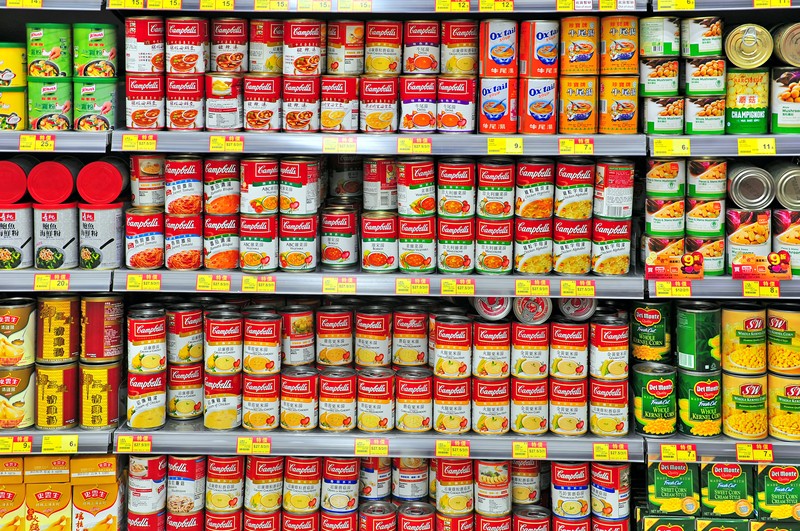Hoarding survival materials and supplies you will use regularly in a survival situation are critical to making sure you are fully prepared for whatever you face.
Here is a partial list of materials and supplies every person will need in a survival scenario.
EQUIPMENT CHECKLIST
Water Filter – A high-quality water filter, designed for filtering untreated water can help you extend you water supply by recycling gray water and/or use water sources outside your home.
Hand-Crank Radio – Hand crank radios offer the ability to listen to important communications when power and cell networks are down. Some hand crank radios even offer a USB charging functionality.
Camp Stove – There are a million options available for this purpose – everything from handy backpacking stoves to heavy-duty outdoor ranges – but it’s hard to beat the old self-contained
Flashlights – When it comes to flashlights, I have two recommendations, and neither one is expensive. First, find a comfortable LED headlamp. Second, rather than finding the brightest, most high-tech available, invest in a Maglite LED that runs on simple AA batteries.
Batteries – Obviously, you’ll need to coordinate your battery storage plan with any of the flashlights, radios, or other devices you may keep in your emergency stockpile. Batteries will last longest in cool dry conditions, but should be rotated out of your emergency supply on a yearly basis.
HOUSEHOLD NECESSITIES
Toothpaste – You never know how long a crisis might continue, and you want to be prepared to keep up your family’s normal hygiene regime throughout the crisis.
Toilet Paper – Running out of toilet paper is annoying in any situation. But you certainly don’t want to run out in a shelter-in-place crisis scenario. My advice is to get more than enough. Life can get messy.
Feminine Hygiene Products – If you won’t be sheltering with any women, obviously you can skip this.
Paper Towels – Once again, because water may be limited, paper towels will be handy for cleaning and drying many things you’d typically use cloth for.
WARMTH AND COMFORT
Sleeping Bags – There’s really no easier or more compact way to store your bedding essentials, especially if you choose a highly insulated sleeping bag designed for backpacking.
Thermal Underwear – Since power utilities may go down for long periods of time during a crisis, thermal underwear could be worth its weight in gold.
Candles – You’ll probably never read a disaster preparedness list that doesn’t include candles, and for good reason. A good stock of slow-burning emergency candles is a survival essential, as well as something to light them with.
Cigarette Lighters – I recommend stashing a combo pack of at least 6 lighters in your stockpile. In a power outage, these guys can become very, very important. The can also be very easy to misplace.
Fire Logs – Manmade fire logs, such as Duraflame, are an excellent choice because they put out more heat and burn longer than real lumber. Again, this is not a camp out, it’s a survival situation.
FOOD
Flour or Wheat, or Both – In a long-term crisis, in which supply chains are completely off-line, the baked goods we take for granted will immediately become a luxury item. Flour and wheat are just as useful for baking as they would be for bartering.
Rice – Dried rice has an incredibly long shelf life, making it ideal for storage. In nutritional terms, rice is rich in starch and carbohydrates. It’s also a good source of Vitamin B, iron, and protein.
Beans, Lentils, Black-eyed peas – Legumes are a great source of protein, iron, and dietary fiber. Like rice, which they’re traditionally served with, dried beans have an exceptionally long shelf life.
Oats, Pancake Mix, Cornmeal – Starchy carbohydrates may be a no-no according to most dieting books, but these foods are a filling source of energy. Plus, they are comfort foods.
Condiments – Mayonnaise, ketchup, mustard, soy sauce, and other dressings will come in very hand when you’re living on a limited survival diet.
Pasta – Pasta stores well, has a long shelf life, and it’s loaded with carbohydrates. It’s also easy to prepare. Not to mention, pasta pairs well with lots of other items on this list.
Peanut Butter – Hoarded by everyone from college students to doomsday survivalists, and for many of the same reasons, peanut butter is a tasty, shelf stable source of protein that pairs with lots of other items.
Energy bars – Since these bars are typically loaded with carbs and protein by design, they’re actually a good choice for your survival storage (maximum nutrition with minimal effort and prep).
Canned soups and chili – Canned soups are easy to prepare and offer a nice variety of ingredients for the effort. Look for low-sodium options. Premium brands may be healthier, but value brands will make your money go further.
Canned veggies – When the farmer’s market is not an option, canned veggies are a good source of the same nutrients.
Canned chicken, tuna, or turkey – Canned meats can be added to pasta, rice, etc., to add flavor, iron, and protein. These canned meats have a shelf life of 2 years, as odd as that may seem.
Tomato Sauce – Canned or jarred, tomato sauce delivers a lot of convenience, calories, and nutritional value. Combine this with your pasta or canned meat.
Hoarding survival supplies and materials is more than just an obsessive-compulsive habit.
Done properly, hoarding of survival supplies and materials can ensure you have what you need in a survival situation and its aftermath.
The key is to make sure you stock up on what you will need versus what you might like to have; for additional information on items you should make sure you are well-stocked with, please visit The Patriot Caller.
